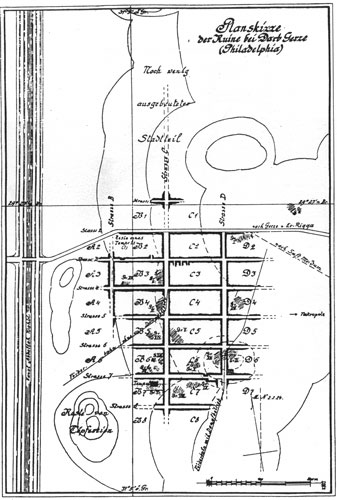

 |
|
 |
|
Aerial Photograph from the Royal Air
Force, 1925 |
|
Town Plan made by Borchardt in 1924 |
During the winter of 1914-1915, villagers digging for sebakh--decayed mudbrick that was used for fertilizer--in the area around modern Kom el-Kharaba discovered a large cache of about 2000 ancient documents. These papyri were the archive of Zenon. Scholars identified this site as the ancient city of Philadelpia, where Zenon was the overseer. Unluckily, we cannot identify the exact location where the papyri were found.
Philadelphia was founded by Ptolemy II Philadelphus, and named in honor of his sister Arsinoe. It was occupied from the third century BCE until the fifth century CE, and its longevity was probably due to its location--on the eastern edge of the Fayum, on the route between the Fayum and the Nile Valley. In the Ptolemaic period, and later in the Roman period, Philadelphia was a thriving town.
Like other towns in the Fayum, Philadelphia relied on agriculture as its principle source of income. It eventually occupied 24 hectares, and the residents of the town may have been buried at a nearby cemetery, the source of numerous Fayum mummy portraits.